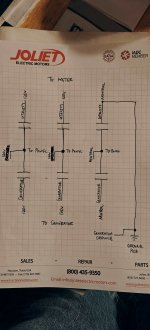I mean, I can't say that's the cause of your problem, but it could have been.
All normal residential generators only have a 2 pole switch. The neutrals all connect to one bus bar in the switch at all times. Neutral floats and grounds connect to a bus bar mounted to the can.
What might have happened is that the two hots made before the neutral did, causing a temporary lost neutral for a cycle or two, enough to spike your fridge. This would be random like any loose neutral situation where the degree of excess voltage on one leg depends on what other loads happen to be switched on at that moment.
There are specific transfer switch mechanisms made to make the neutral before making the hots, and break the hots before breaking the neutral.
But this is all speculation on my part.


